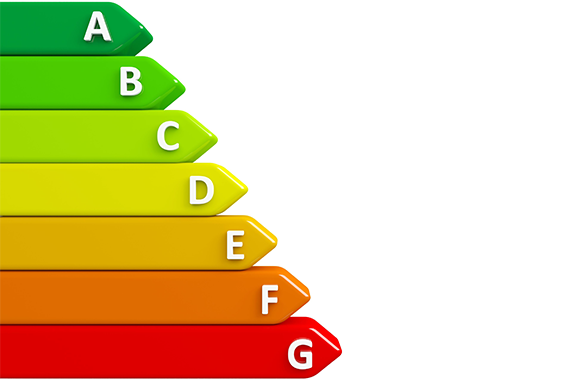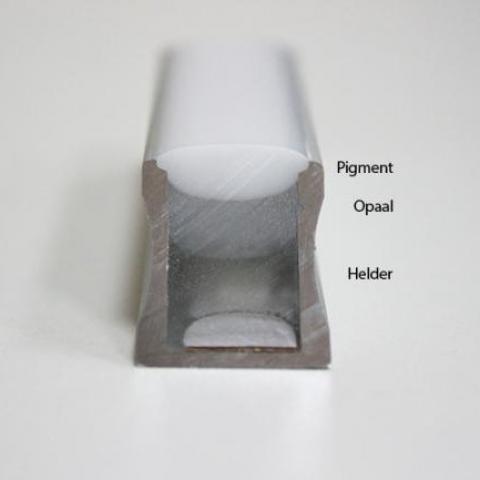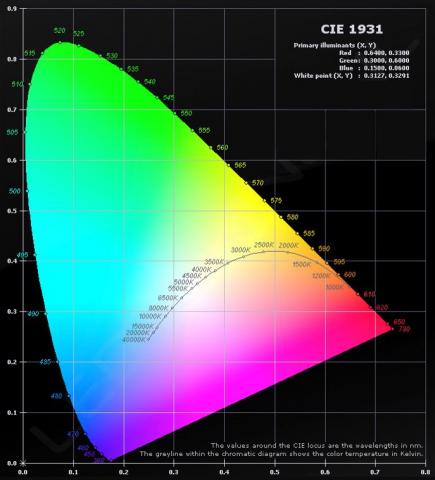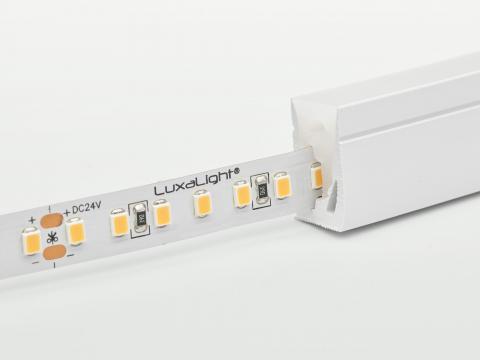Energy consumption and lifespan of LED
Unlike other light sources, LED lighting consumes much less power. The energy consumption of an LED strip depends on the set color or combination of colors, the type of LED and the amount of LEDs per meter. The type of LED on the strip and the amount of LEDs per meter also determine the consumption of an LED strip. By far the most widely used LEDs at the moment are of the types 3528, 5050 and 2835, where types 3528 and 2835 are often used for single-colored LED strips and the type 5050 for multi-colored, RGB LED strips. Most LED strips used are equipped with 60, 120 or 140 LEDs per meter. Other numbers of LEDs per meter are also available, however they are used much less often. With an LED strip in the color white, the power consumption is maximum (this because all colors are lit). The consumption per strip per meter can therefore vary.
Because each RGB LED chip consists of 3 LEDs, the chosen color determines the power consumption of the LED strip. When all 3 LEDs are lit at full brightness (this is the case when the color white is chosen), the LED strip consumes the most power. When an individual color is chosen, the consumption is approximately 1/3 of this. When a color is chosen which consists of 2 primary colors (for example purple, this is red and blue) the consumption is two thirds.
The determining factor for the power consumption is how much the strip is dimmed. A dimmed LED strip uses much less power than when it burns at full strength. When you combine this with the already low consumption of the LEDs, this makes a LED strip a very sustainable investment.
LED strips have a much longer lifespan than ordinary lighting. A normal lamp has a lifespan of approximately 1000 burning hours. LED lighting, on the other hand, has 50,000 or more burning hours.
A comparison over 20 years in energy consumption and lifespan for 800 lumens of light:
- An incandescent lamp consumes 60 watts for 800 lumens, lasts about 1200 hours. It takes 21 lamps for 20 years.
- A CFL energy saving lamp consumes 14 watts for 800 lumens and lasts approximately 10,000 hours. 3 lamps are required for 20 years.
- An LED lamp consumes 10 watts for 800 lumens and lasts at least 50,000 hours. At 20 years, the LED lamp is half its life.
- The lifespan and light output between LED lamps and LED strips do not differ very much. The very bright 5630 LEDs are also used on LED strips.
If one can save about 25 kWh per lamp per year, the savings can increase considerably when multiple lamps are replaced for LED lighting. Due to the durability, economy and efficiency of LED lighting, you can not only save a lot of money, but it is also a considerable burden reduction for the environment. Because so much less power is consumed, LED contributes to reducing CO2 emissions.
In addition, an LED recessed spot does not contain any toxic substances such as mercury. A substance that is used with other light sources and which is also very harmful to the environment.



